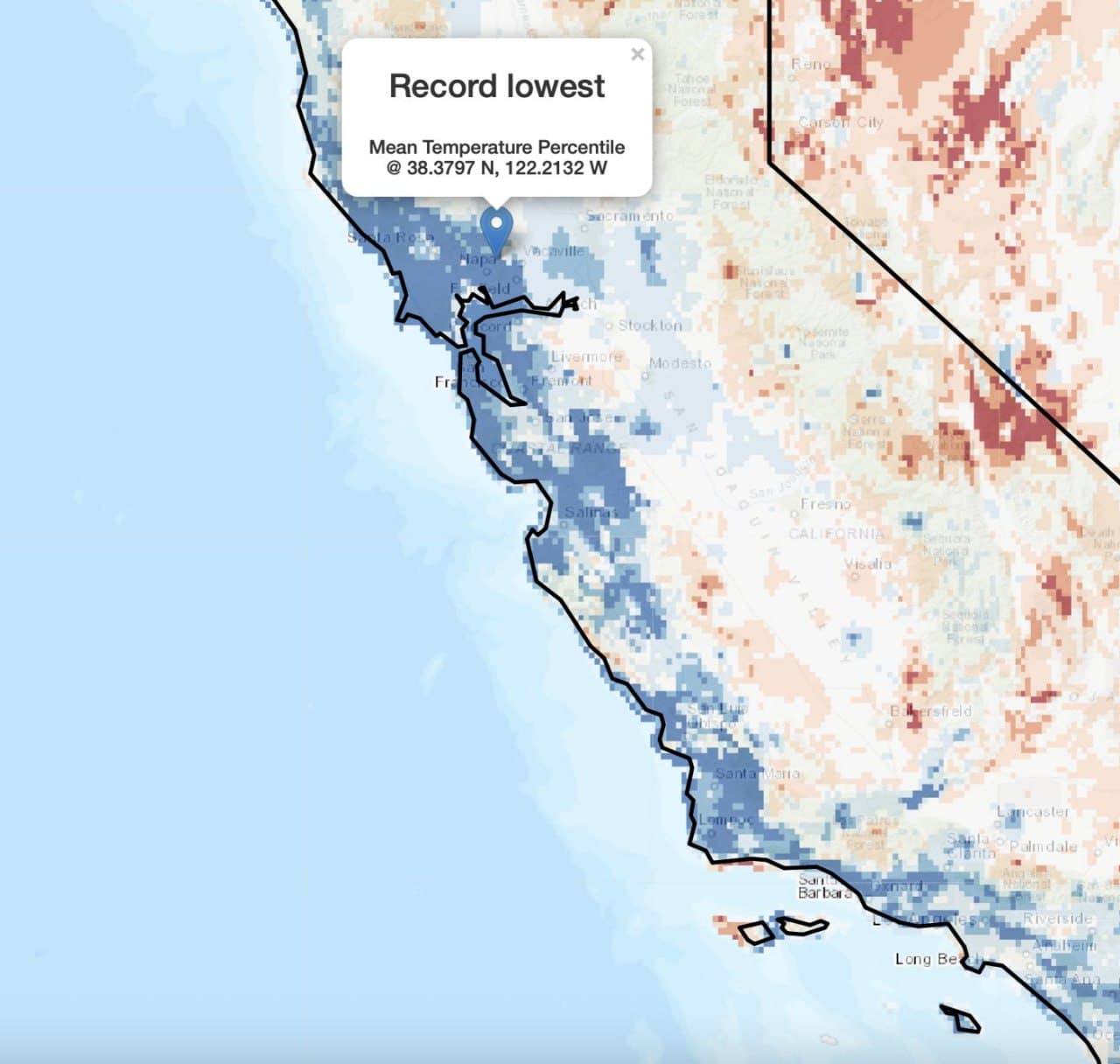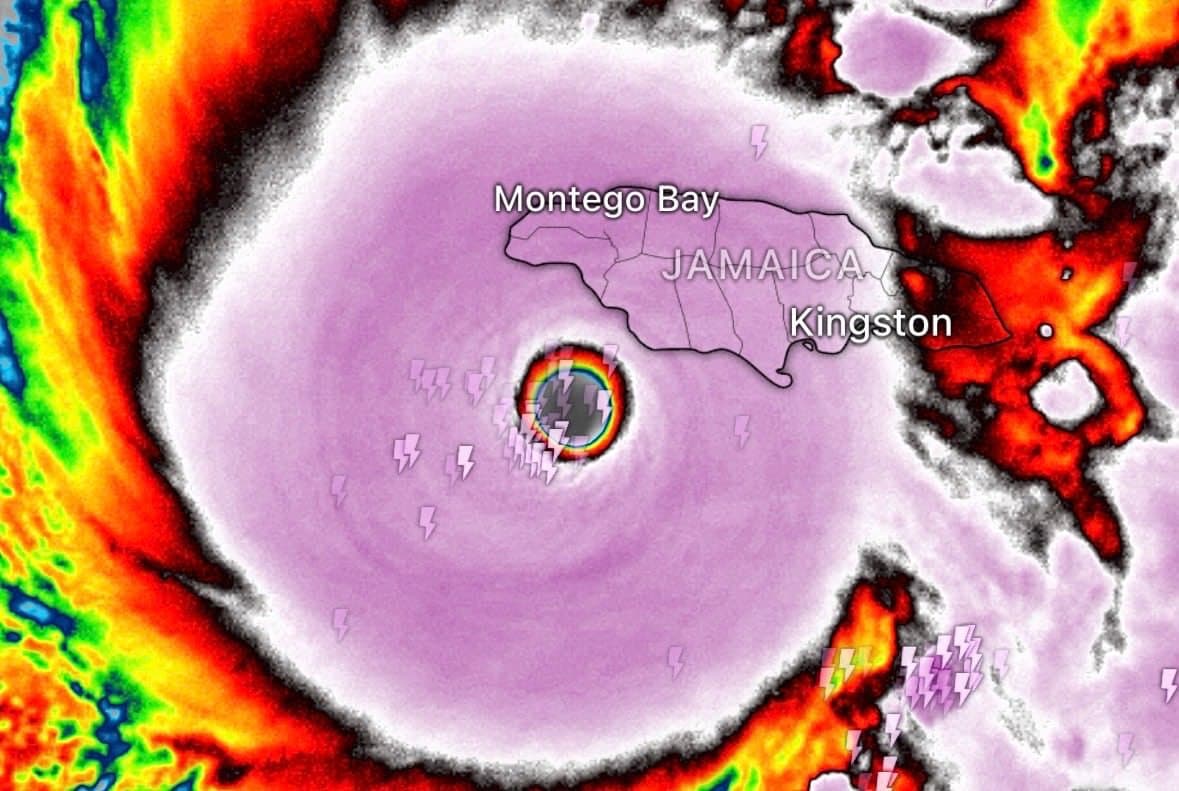California Faces Record Cold Summer as Coastal Cities See Unprecedented Low Temperatures
Millions of Californians are experiencing a summer unlike any other, as the state grapples with record-low temperatures that have left many residents bewildered. From the Bay Area to parts of Southern California, the first two months of summer have proven to be the coldest on record, with some areas reporting temperatures more akin to Alaska than the sunny beaches typically associated with California.
Background & Context
The unusual weather patterns affecting California this summer have baffled meteorologists and residents alike. According to data compiled since 1979, areas marked in dark blue on temperature maps have recorded their coolest June 1 to August 1 periods ever. Petaluma, located in the North Bay, is experiencing summer weather more characteristic of Fairbanks, Alaska, rather than its usual Mediterranean climate. This stark deviation has raised concerns about the long-term implications of climate change and its impact on local ecosystems and communities.
The historical significance of these temperature drops cannot be overstated. California is known for its warm summers, with residents typically basking in the sun. The consistent cool temperatures this season have prompted discussions about meteorological anomalies and the potential for shifting climate patterns in the region. As previously reported, California has faced increasing climate variability, raising questions about the future of its weather systems.
Key Developments
San Francisco has recorded a surprising statistic, with only two days surpassing 70°F since the beginning of June. This is a stark contrast to the city"s usual summer climate, where temperatures often reach the mid-70s or higher. Similarly, Monterey has seen its highest temperature this summer capped at just 71°F—an unprecedented occurrence, as historical data shows that every summer since World War II recorded at least one day reaching 74°F or above.
Lompoc, situated on the Central Coast, is also enduring its coldest summer since 1971. The implications of these temperature drops extend beyond mere discomfort; they affect local agriculture, tourism, and the economy. The cooler climate can hamper crop growth, disrupt tourism activities, and challenge local businesses that rely on warm-weather patronage. Residents are left questioning the potential long-term impacts on their local economies and lifestyles.
Broader Impact
The ramifications of this chilly summer extend well beyond California"s borders. Experts warn that the unusual weather patterns could be indicative of broader climate changes that may have far-reaching consequences. Dr. Sylvia Martinez, a climatologist at Stanford University, commented on the situation, stating, "What we"re witnessing may just be the tip of the iceberg. Such anomalies can have cascading effects on regional ecosystems, agriculture, and even public health."
Historically, California has been known for its agricultural output, heavily reliant on predictable weather patterns. With this summer"s cooler temperatures, farmers are expressing concern over crop yields and the viability of certain crops. Additionally, the tourism sector, which thrives on sunny days and beach visits, may see a downturn, prompting local businesses to adjust their strategies in response to the changing climate.
What"s Next
As California continues to endure this record cold summer, residents and officials alike are left pondering what lies ahead. Meteorologists are closely monitoring the situation, with predictions suggesting that the cooler temperatures could persist for the remainder of the season. This could lead to increased scrutiny of water usage and conservation efforts, particularly in a state that has faced severe drought in recent years.
Additionally, state officials may need to consider adaptive strategies to address the economic impacts on agriculture and tourism. Local governments and businesses are encouraged to develop contingency plans to mitigate the effects of ongoing climate variability. As California navigates this unprecedented weather pattern, the state"s response will likely inform future policies regarding climate resilience and sustainability.
For further insights into how global events intersect with local issues, readers may find interest in recent developments concerning international political dynamics, which also reflect the interconnected nature of today"s world.

![[Video] Passenger films Hurricane Melissa from 30,000 feet](/_next/image?url=%2Fapi%2Fimage%2Fthumbnails%2Fthumbnail-1761915046035-8cdqeg-thumbnail.jpg&w=3840&q=75)
![[Video] Hurricane Melissa makes landfall as Category Three storm in Cuba](/_next/image?url=%2Fapi%2Fimage%2Fthumbnails%2Fthumbnail-1761726046227-gf3hoff-thumbnail.jpg&w=3840&q=75)
![[Video] Storm surge recorded in Frenchman's Bay, Treasure Beach, Jamaica](/_next/image?url=%2Fapi%2Fimage%2Fthumbnails%2Fthumbnail-1761668477667-6632k4-thumbnail.jpg&w=3840&q=75)


![[Video] Trump says US lost 'a little bit of sovereignty' in New York](/_next/image?url=%2Fapi%2Fimage%2Fthumbnails%2Fthumbnail-1762374644834-4mb6g4-thumbnail.jpg&w=3840&q=75)

